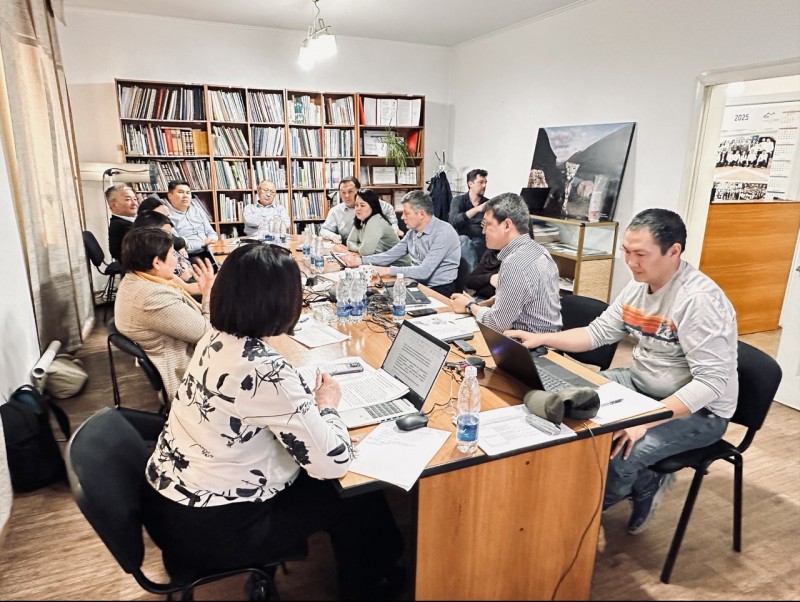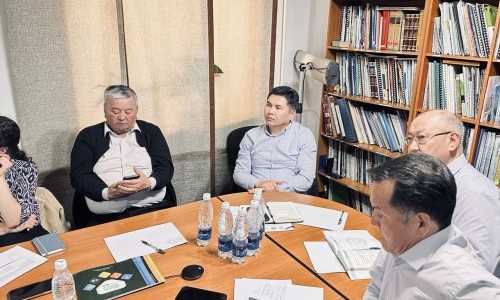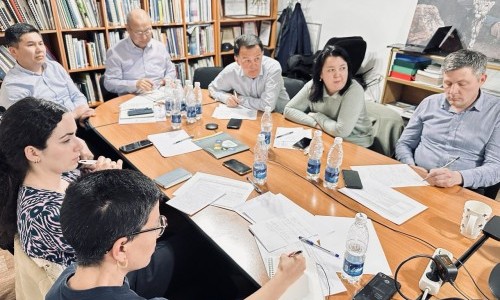
Kyrgyzstan signed the Convention on Biological Diversity (CBD) in 1996. Since then, experts have been regularly revising and updating the National Biodiversity Strategy and Action Plan (NBSAP), taking into account changes in the state of the environment—such as ecosystem degradation, species extinction, as well as global challenges including climate fluctuations, air pollution, etc. To effectively adapt to these conditions, it is necessary to review conservation goals and measures.
This year, the update of strategic documents in Kyrgyzstan is being conducted in accordance with the Kunming-Montreal Global Biodiversity Framework for the CBD, adopted in December 2022. The process of updating the NBSAP involves government agencies, non-governmental organizations, academic institutions, and independent experts. Currently, the discussion is taking place in a focus group format. As noted by Ilya Domashov, a representative of the Biom organization, the focus groups are analyzing previously proposed measures and refining suggestions gathered during earlier discussions.
The latest focus group meeting was devoted to the topic “Other Effective Conservation Measures (OECM) – Alternatives to Protected Areas for Expanding Conserved Areas.” The event was organized by the СAМР Alatoo PF and was attended by heads of the Biodiversity Conservation Department of the Ministry of Natural Resources of the Kyrgyz Republic, scientists from the Academy of Sciences, and representatives of local NGOs. Online, representatives of the International Union for Conservation of Nature (IUCN), UNEP, and other international experts also joined the discussion.
During the meeting, СAМР Alatoo PF proposed including the concept of OECMs in the updated NBSAP. As explained by the foundation’s director, Murat Zhumashev, OECMs encompass areas where not only individual species but entire ecosystems are effectively conserved over a prolonged period under natural conditions. Such areas may include wetlands, fishing zones, sustainable pastures, and forests. “OECMs are an alternative pathway to achieving one of the CBD’s goals, which is to conserve at least 30% of terrestrial and aquatic areas by 2030. Pursuing this goal solely through the establishment of protected areas would require large land appropriations. That is why international practice suggests adopting and developing OECMs,” added Murat Zhumashev. Representatives of the Ministry of Natural Resources of the Kyrgyz Republic supported this idea, noting that “OECMs are a good concept because it is practically impossible to increase the area of protected areas by any other means,” stated Susanna Seydeyeva, a representative of the Forest Service of the Kyrgyz Republic.
As mentioned during the session, СAМР Alatoo PF has practical experience in applying the OECM approach. Within this framework, the organization is working on the international project “One Health in Nature Conservation — Enhancing Landscape Resilience to Zoonotic Diseases through the Consolidation of Nature Conservation Systems in Central Asia.” One of the project’s objectives is to incorporate OECM mechanisms into national strategies and policies. Experts have pointed out that, if desired, Kyrgyzstan can also be included in the list of OECM-designated areas—a list that already officially comprises more than 6,000 sites worldwide.
The concept of OECMs sparked significant interest among the participants and became the subject of active discussion. Questions were raised about how OECMs differ from protected areas, how sites will be evaluated against the established criteria, which government and local bodies could be involved in the recognition and monitoring process, and how local communities or other stakeholders will be involved in the management of such areas.
Subsequently, the focus group participants proposed measures to improve the local biodiversity management system. In particular, they stressed the need to inventory nature reserves, review their status, and update the regulatory framework. The participants also recommended incorporating ecological corridors into pasture management plans and clearly defining the mechanisms for their implementation. СAМР Alatoo PF is already working on the creation of such ecological corridors as part of the project “Adaptation of Migratory Mammals to Climate Change (CAMCA).” In addition, ecological corridors between pilot protected areas have been included in the National Development Program of the Kyrgyz Republic for 2025.
As a result of the discussions, the concept of OECMs, along with subsequent steps for its implementation and improvements in local biodiversity management, has been incorporated into the recommendations for updating the National Biodiversity Strategy and Action Plan. This may form the basis for further development of the mechanisms for implementing and monitoring these measures.




Итоги пастбищного сезона 2018 года были подведены на очередном заседании районной пастбищной комиссии (РПК).
MoreThe development of the unified method, "Monitoring Pastures at the Local Level," is nearing completion.
MoreЧетыре новых моста построены в 2018 году в Кыргызстане при поддержке ОФ “CAMP Алатоо” и Швейцарской ассоциации “Памирские...
More